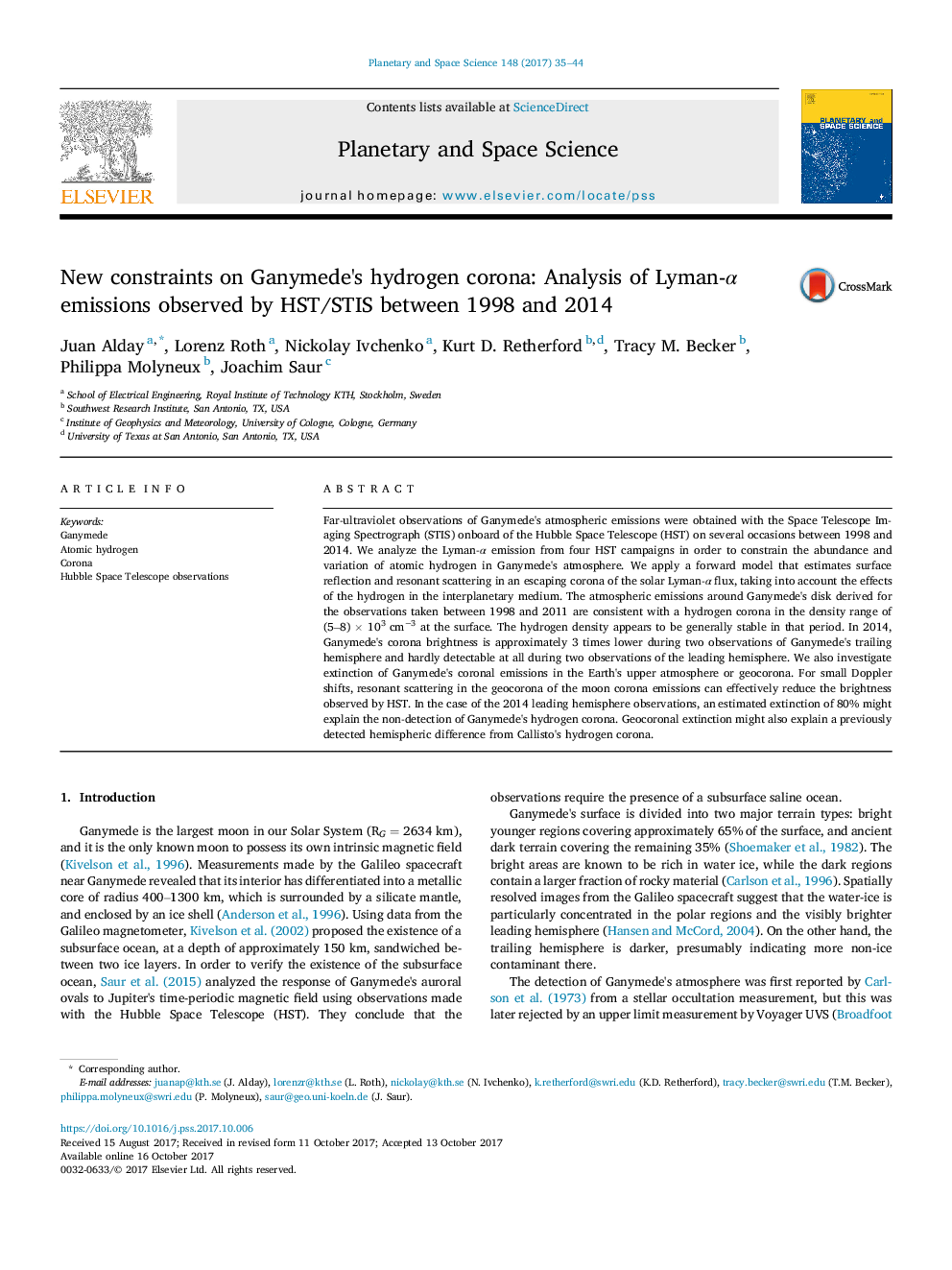| Article ID | Journal | Published Year | Pages | File Type |
|---|---|---|---|---|
| 8142565 | Planetary and Space Science | 2017 | 10 Pages |
Abstract
Far-ultraviolet observations of Ganymede's atmospheric emissions were obtained with the Space Telescope Imaging Spectrograph (STIS) onboard of the Hubble Space Telescope (HST) on several occasions between 1998 and 2014. We analyze the Lyman-α emission from four HST campaigns in order to constrain the abundance and variation of atomic hydrogen in Ganymede's atmosphere. We apply a forward model that estimates surface reflection and resonant scattering in an escaping corona of the solar Lyman-α flux, taking into account the effects of the hydrogen in the interplanetary medium. The atmospheric emissions around Ganymede's disk derived for the observations taken between 1998 and 2011 are consistent with a hydrogen corona in the density range of (5-8) Ã 103 cmâ3 at the surface. The hydrogen density appears to be generally stable in that period. In 2014, Ganymede's corona brightness is approximately 3 times lower during two observations of Ganymede's trailing hemisphere and hardly detectable at all during two observations of the leading hemisphere. We also investigate extinction of Ganymede's coronal emissions in the Earth's upper atmosphere or geocorona. For small Doppler shifts, resonant scattering in the geocorona of the moon corona emissions can effectively reduce the brightness observed by HST. In the case of the 2014 leading hemisphere observations, an estimated extinction of 80% might explain the non-detection of Ganymede's hydrogen corona. Geocoronal extinction might also explain a previously detected hemispheric difference from Callisto's hydrogen corona.
Related Topics
Physical Sciences and Engineering
Earth and Planetary Sciences
Geophysics
Authors
Juan Alday, Lorenz Roth, Nickolay Ivchenko, Kurt D. Retherford, Tracy M. Becker, Philippa Molyneux, Joachim Saur,
